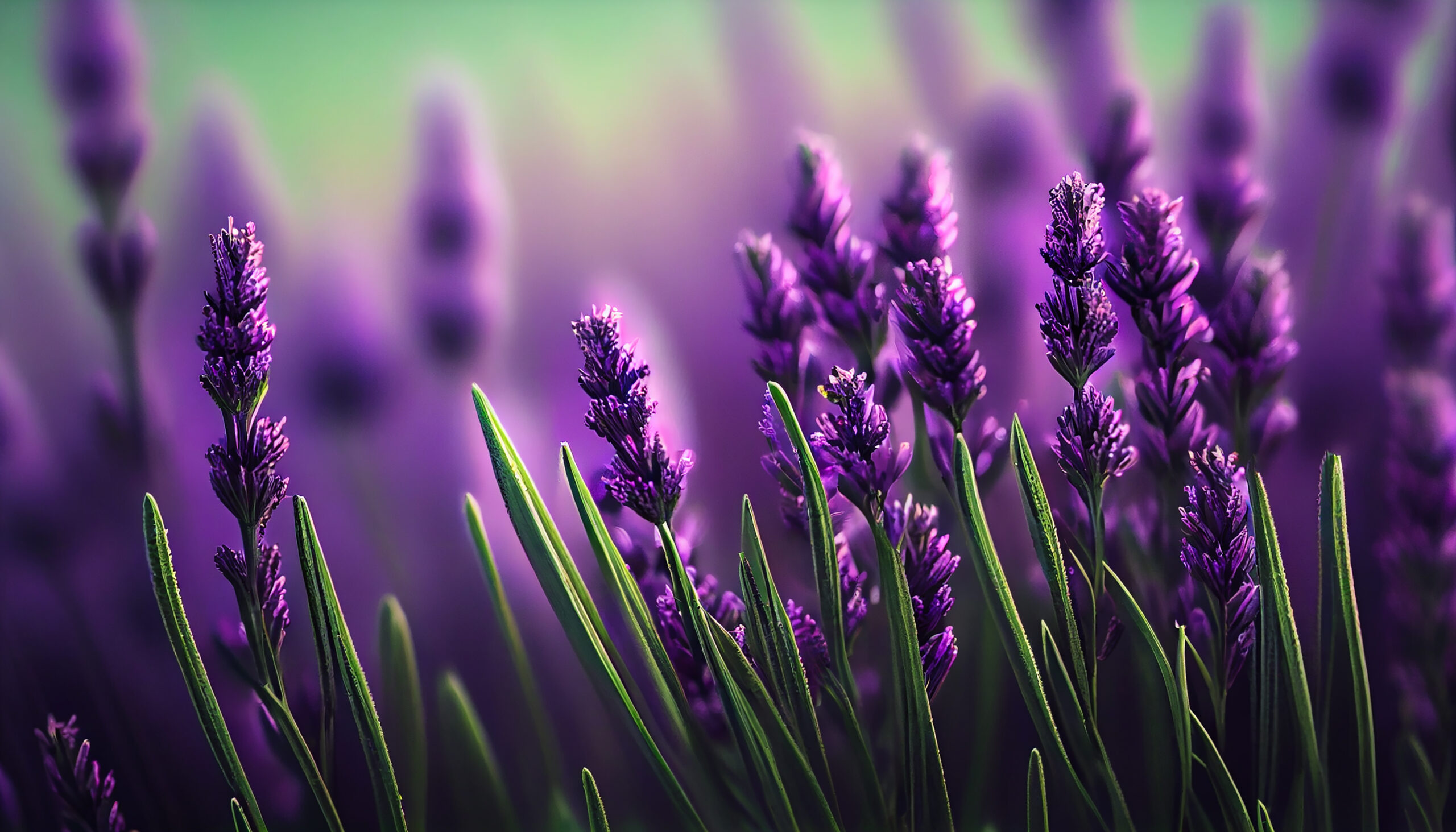the Secrets of Lavender: Nature’s Fragrant Treasure
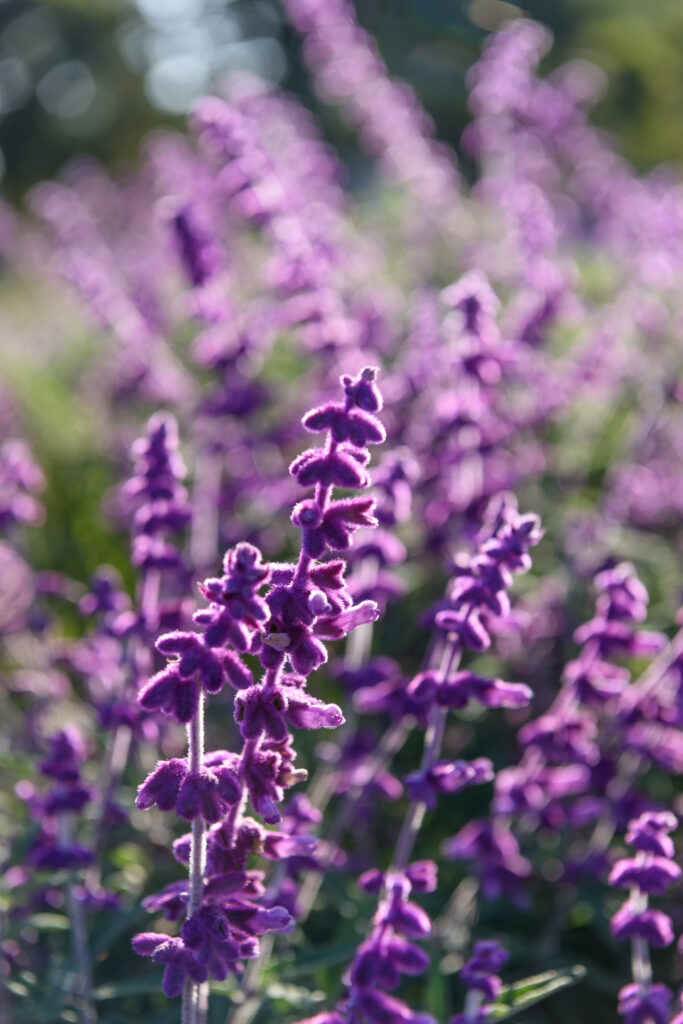
Table of Contents
- Introduction
- The History of Lavender
- Varieties of Lavender
- Lavender’s Culinary Uses
- Lavender in Aromatherapy
- Lavender’s Medicinal Properties
- Lavender in Cosmetics
- Growing Lavender at Home
- Harvesting and Drying Lavender
- Lavender Crafts and DIY Projects
- Lavender’s Impact on Sleep
- Lavender as an Insect Repellent
- Lavender in Art and Culture
- Sustainable Lavender Farming
- Conclusion
Introduction
Lavender, with its mesmerizing fragrance and diverse applications, is a beloved herb that has been cherished for centuries. This article will delve into the multifaceted world of lavender, exploring its history, varieties, uses, and much more.
The History of Lavender
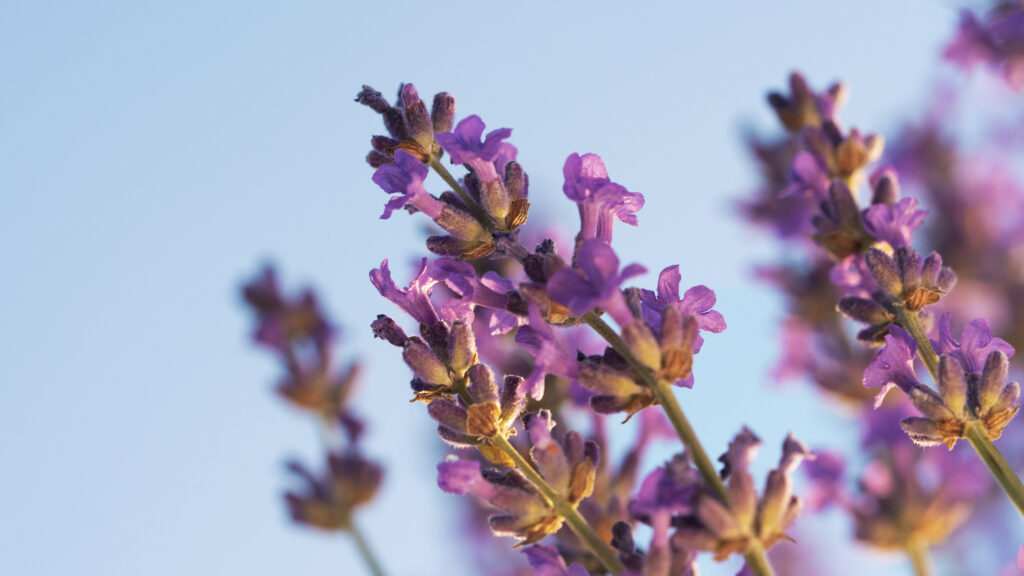
Lavender’s captivating history is a tale that spans millennia, encompassing diverse cultures and civilizations. Its journey through time reveals a remarkable story of reverence, healing, and cultural significance.
Ancient Beginnings
The story of lavender begins in the cradle of civilization. Ancient texts dating back over 2,500 years, including those from Egypt, Greece, and Rome, speak of lavender’s virtues. In these early societies, lavender was not merely a decorative flower but a symbol of purity and protection. It was often used in religious ceremonies and rituals to ward off evil spirits.
Medicinal Marvel
As civilization advanced, so did the understanding of lavender’s medicinal properties. The ancient Egyptians used lavender in their embalming process, recognizing its preservative qualities. Greeks and Romans, on the other hand, turned to lavender for its therapeutic benefits. They used it to alleviate a variety of ailments, from headaches and digestive issues to insomnia and anxiety.
Lavender in the Middle Ages
During the Middle Ages, lavender became a staple in European monastic gardens. Monks and nuns cultivated lavender for its medicinal uses, but it also found its way into the medieval court. Lavender’s fragrance was considered a luxury, adorning the chambers of kings and queens. Its scent was believed to ward off the plague, a belief that led to lavender’s use in protective sachets worn around the neck.
Renaissance and Beyond
The Renaissance marked a period of enlightenment and exploration, and lavender played a significant role. It became a symbol of cleanliness and purity, and its essential oil was widely used in perfumes and cosmetics. Lavender’s versatility continued to expand as it found its way into sachets, potpourri, and even as a key ingredient in the famous “Four Thieves Vinegar,” believed to protect against the bubonic plague.
Lavender’s Journey to Modern Times
Lavender’s journey continued into the modern era, where it remained a beloved herb with a wide array of applications. Its therapeutic benefits became more deeply understood, and it gained popularity in aromatherapy and herbal medicine. Today, lavender is a common sight in gardens, spas, and homes worldwide.
The history of lavender is a testament to the enduring appeal and versatility of this remarkable herb. From ancient civilizations to the modern world, lavender has maintained its status as a fragrant treasure, cherished for its cultural significance and healing properties. As we continue to explore the wonders of lavender, we honor the traditions of our ancestors and embrace the timeless essence of this extraordinary plant.
Varieties of Lavender
Lavender, a beloved herb known for its enchanting fragrance and numerous uses, boasts a diverse family of species and cultivars. Each variety offers a unique aroma, appearance, and set of characteristics, making lavender a fascinating subject of exploration for gardeners, enthusiasts, and those seeking its therapeutic benefits. Here, we’ll delve into some of the most popular lavender varieties, each with its distinct charm.
1. English Lavender (Lavandula angustifolia)
- Appearance: English Lavender is celebrated for its compact growth habit, reaching heights of around 18-24 inches. Its slender, gray-green leaves provide an elegant backdrop for the vibrant blooms.
- Fragrance: Known for its sweet, soothing aroma, English Lavender is often the top choice for culinary and aromatherapy purposes.
- Common Cultivars: ‘Hidcote,’ ‘Munstead,’ and ‘Lavender Lady’ are popular cultivars that showcase variations in flower color and growth habits.
2. French Lavender (Lavandula stoechas)
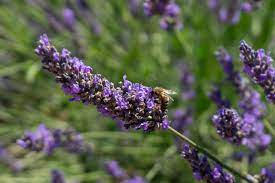
- Appearance: French Lavender stands out with its distinctive, pineapple-shaped flower heads crowned by elongated purple bracts. It tends to be more sprawling in growth.
- Fragrance: While still pleasantly fragrant, French Lavender’s aroma is often considered somewhat milder compared to English Lavender.
- Common Cultivars: ‘Anouk’ and ‘Spanish Eyes’ are well-known cultivars within this category, offering variations in flower color and size.
3. Spanish Lavender (Lavandula dentata)
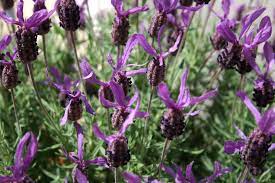
- Appearance: Spanish Lavender is recognizable by its serrated or toothed leaves, which add an interesting texture to the garden. Its blooms are compact and come in shades of purple.
- Fragrance: This variety boasts a lovely, slightly sweet scent that makes it a favorite for potpourri and sachets.
- Common Cultivars: ‘Goodwin Creek Grey’ and ‘Royal Crown’ are popular cultivars known for their attractive foliage and vibrant flowers.
4. Lavandin (Lavandula x intermedia)
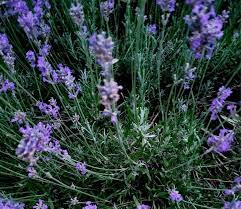
- Appearance: Lavandin is a hybrid lavender known for its tall, robust stalks and abundant flower spikes. It’s often used in commercial lavender production.
- Fragrance: Lavandin’s aroma is strong and slightly more camphoraceous than other lavender varieties, making it a favorite for essential oil production.
- Common Cultivars: ‘Grosso’ and ‘Provence’ are well-recognized cultivars with tall, impressive flower spikes.
5. Lavandula Heterophylla (Lavandula heterophylla)
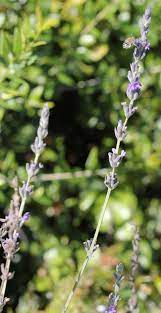
- Appearance: Lavandula heterophylla, also known as Sweet Lavender, boasts narrow leaves and striking, tall spikes of vibrant purple flowers.
- Fragrance: Its fragrance is sweet and aromatic, making it a delightful choice for both the garden and aromatherapy.
- Common Cultivars: While not as widely cultivated as some other varieties, Lavandula heterophylla offers an understated charm in gardens.
6. Lavandula x Chaytorae (Lavandula x chaytorae)
- Appearance: Lavandula x chaytorae, or Chaytor’s Lavender, features delicate pale purple blooms and silver-gray foliage, creating a soft and ethereal appearance.
- Fragrance: Its fragrance is gentle and pleasing, making it a lovely choice for aromatic gardens and cut flower arrangements.
- Common Cultivars: ‘Chaytor’ and ‘Chaytor Pink’ are cultivars to explore within this captivating lavender variety.
The world of lavender is rich and diverse, offering a spectrum of scents and visual delights. Whether you seek lavender for its culinary, aromatic, or ornamental qualities, these varieties provide a multitude of options to suit your preferences and garden aesthetics. As you explore the world of lavender, you’ll discover that each variety has its own unique charm, adding beauty and fragrance to gardens and homes around the world.
Lavender’s Culinary Uses
Lavender, with its fragrant and versatile nature, transcends its traditional role as a garden favorite to become an enchanting ingredient in the culinary world. Its delicate and aromatic blooms lend a unique flavor profile to various dishes and beverages. Let’s explore the culinary uses of lavender and discover how this herb can elevate your kitchen creations.
1. Lavender in Baking
- Lavender Sugar: Lavender-infused sugar is a simple yet delightful creation. Combine dried lavender buds with granulated sugar, let them meld together in an airtight container, and use this fragrant sugar to add a subtle lavender essence to cookies, cakes, and scones.
- Lavender Shortbread: Lavender’s floral notes complement the buttery richness of shortbread cookies. Incorporate finely chopped dried lavender flowers into your shortbread dough for a hint of elegance in every bite.
- Lavender Cakes: Lavender-infused cakes, whether in the form of a classic pound cake or a lavender honey cake, offer a delicate and sophisticated dessert option. Lavender pairs wonderfully with honey, lemon, and vanilla flavors.
2. Lavender in Beverages
- Lavender Tea: A soothing cup of lavender tea is a perfect way to unwind. Steep dried lavender buds in hot water for a calming and aromatic herbal tea. Add honey or lemon for extra flavor.
- Lavender Lemonade: Lavender adds a unique twist to traditional lemonade. Infuse your lemonade with a lavender syrup made by simmering lavender buds with sugar and water, then straining it before mixing with lemon juice and water.
- Lavender Cocktails: Bartenders have embraced lavender’s floral notes in cocktails. Lavender syrup or a few dried buds can enhance gin and tonic, champagne, or even a classic lavender martini.
3. Savory Dishes
- Lavender Herbed Salt: Combine dried lavender with sea salt and herbs like rosemary and thyme to create a fragrant lavender herb salt. Use it as a seasoning for roasted meats, vegetables, or even popcorn.
- Lavender-infused Oil: Infuse olive oil with dried lavender to add a subtle floral note to salad dressings or drizzle it over grilled vegetables and seafood.
- Lavender Honey Glaze: Create a glaze by mixing lavender honey with a touch of balsamic vinegar. Brush it over roasted chicken or pork for a unique flavor profile.
4. Garnishes and Decorations
Edible Lavender Petals: Lavender petals can be used as a garnish for desserts, salads, and cocktails, adding visual appeal along with a hint of flavor.
Candied Lavender: Transform lavender buds into candied delights by coating them in sugar syrup. These make for elegant cake decorations or standalone treats.
Tips for Using Lavender in Cooking
- Use sparingly: Lavender is potent, so a little goes a long way. Start with a small amount and adjust to taste.
- Choose culinary lavender: Ensure that the lavender you use is labeled as culinary lavender, free from pesticides or chemicals.
- Crush or grind: To release the essential oils and flavor, crush or grind dried lavender buds before use.
Incorporating lavender into your culinary repertoire can open up a world of creative possibilities in the kitchen. Its subtle, floral aroma can elevate both sweet and savory dishes, adding a touch of sophistication to your culinary endeavors. So, don’t hesitate to experiment with this fragrant herb and savor the unique flavors it brings to your meals and beverages.
Lavender in Aromatherapy
Aromatherapy, the practice of using essential oils to enhance physical and emotional well-being, has a longstanding love affair with lavender. Lavender essential oil is often considered the “swiss army knife” of aromatherapy due to its versatility and wide range of therapeutic benefits. Let’s explore how lavender plays a central role in aromatherapy and its myriad of applications for relaxation, stress relief, and overall health.
The Calming Power of Lavender
- Stress Reduction: Lavender is renowned for its ability to induce relaxation and reduce stress and anxiety. The inhalation of lavender essential oil can help soothe the nervous system, promoting a sense of calm and tranquility.
- Sleep Aid: Lavender is a natural remedy for sleeplessness and insomnia. Diffusing lavender oil in the bedroom or adding a few drops to your pillow can encourage restful, uninterrupted sleep.
- Mood Enhancement: Lavender’s pleasant and floral scent has mood-enhancing properties. It can lift spirits and alleviate symptoms of mild depression, making it an excellent choice for aromatherapy blends.
Aromatherapeutic Applications
- Diffusion: Using a diffuser, lavender oil can be dispersed into the air, creating a calming and aromatic environment. This method is particularly effective for relaxation and stress reduction.
- Bathing: Adding a few drops of lavender oil to your bathwater can transform your bathing experience into a spa-like retreat. The steam from the warm water carries the aroma, promoting relaxation.
- Massage: Lavender essential oil, when diluted with a carrier oil, can be used for a soothing and aromatic massage. It helps relieve muscle tension and promotes relaxation.
- Inhalation: Direct inhalation of lavender oil by placing a drop or two on a tissue or inhaling from a bottle can provide quick relief from stress or anxiety.
- Pillow Sprays: Creating a lavender-infused pillow spray is an excellent way to promote restful sleep. Simply mist your pillow and bedding lightly before bedtime.
- Skin Care: Lavender oil’s antiseptic and anti-inflammatory properties make it a valuable addition to skin care products. It can soothe skin irritations and promote healing.
Safety Precautions
While lavender essential oil is generally considered safe, it’s essential to take a few precautions:
- Dilution: Always dilute lavender oil with a carrier oil (e.g., coconut, almond, or jojoba oil) before applying it to the skin.
- Patch Test: Perform a patch test to check for any allergic reactions before using lavender oil topically.
- Consultation: If you are pregnant, nursing, or have underlying medical conditions, consult a qualified aromatherapist or healthcare professional before using lavender oil.
Lavender’s role in aromatherapy is a testament to its gentle yet powerful healing properties. Whether you seek relaxation, stress relief, or a good night’s sleep, lavender essential oil has your back. With its calming, soothing, and mood-enhancing effects, it’s no wonder that lavender remains one of the most beloved and cherished essential oils in the world of aromatherapy. So, the next time you’re in need of some serenity and balance, turn to lavender and let its fragrant embrace transport you to a place of tranquility and well-being.
Lavender’s Medicinal Properties
Lavender, the fragrant and versatile herb, is not only a delightful addition to gardens and aromatherapy but also a source of various medicinal properties. For centuries, lavender has been cherished for its therapeutic benefits, making it a staple in traditional medicine and holistic healing practices. Let’s explore the remarkable medicinal properties of lavender and its potential applications for promoting well-being.
1. Headache Relief
Lavender Oil: Lavender essential oil, when diluted and applied topically to the temples or massaged on the forehead, can help alleviate tension headaches and migraines. Its soothing aroma and anti-inflammatory properties contribute to headache relief.
2. Skin Soothing
- Anti-Inflammatory: Lavender’s anti-inflammatory and antiseptic properties make it effective in treating minor skin irritations, such as insect bites, burns, and rashes. Applying diluted lavender oil can help soothe and promote healing.
- Acne Control: Lavender oil’s antibacterial properties make it a valuable addition to skincare routines. It can be used to target acne and blemishes, reducing inflammation and preventing infection.
- Eczema and Psoriasis: Lavender oil may provide relief to individuals with eczema and psoriasis by reducing itching and inflammation. However, it should be used cautiously and diluted with a carrier oil.
3. Relaxation and Anxiety Reduction
- Stress and Anxiety: Lavender’s calming aroma can help reduce stress and anxiety levels. Diffusing lavender essential oil or using it in aromatherapy blends can promote relaxation and a sense of well-being.
- Sleep Aid: Lavender’s sedative properties make it a natural remedy for insomnia and sleep disturbances. A few drops of lavender oil on your pillow or in a diffuser can improve sleep quality.
4. Pain Management
- Muscle Pain: Lavender oil, when applied topically, can help relieve muscle aches and pains. It has analgesic properties that provide comfort and relaxation to sore muscles.
5. Respiratory Health
- Respiratory Conditions: Inhaling steam infused with lavender oil can help alleviate symptoms of respiratory conditions like colds, coughs, and sinus congestion. It can promote easier breathing and reduce discomfort.
6. Wound Healing
- Minor Cuts and Scrapes: Lavender’s antiseptic properties aid in preventing infection and promoting the healing of minor wounds. It can be applied topically to clean cuts and scrapes.
Safety Considerations
While lavender offers numerous medicinal benefits, it’s essential to use it safely:
- Dilution: Always dilute lavender essential oil with a carrier oil before applying it to the skin.
- Patch Test: Perform a patch test to check for any allergic reactions before using lavender oil topically.
- Consultation: If you are pregnant, nursing, or have underlying medical conditions, consult a qualified healthcare professional before using lavender oil for medicinal purposes.
Lavender’s medicinal properties have earned it a cherished place in the world of natural remedies and holistic health. From relieving headaches and soothing skin irritations to promoting relaxation and aiding sleep, lavender’s therapeutic benefits are wide-ranging and well-documented. Whether you choose to incorporate it into your skincare routine, diffuse it for relaxation, or use it for pain relief, lavender remains a fragrant and versatile ally on your journey to enhanced well-being.
Lavender in Cosmetics
Lavender, with its enchanting fragrance and therapeutic properties, has been a beloved ingredient in cosmetics for centuries. Its versatility makes it a go-to choice for skincare and beauty products, offering not only a delightful aroma but also a myriad of benefits for the skin and hair. Let’s explore how lavender is incorporated into cosmetics and its remarkable contributions to the world of beauty.
1. Lavender in Skin Care
- Cleansers: Lavender’s antiseptic properties make it a valuable ingredient in facial cleansers. It helps cleanse the skin, removing impurities and excess oil while leaving a refreshing scent.
- Toners: Lavender-infused toners help balance the skin’s pH levels and reduce redness, making them an excellent choice for soothing and hydrating the skin.
- Face Masks: Lavender is often used in face masks for its calming and skin-rejuvenating properties. It can help reduce inflammation, promote cell renewal, and improve the overall complexion.
- Serums: Lavender serums are cherished for their ability to hydrate and nourish the skin. They can aid in reducing the appearance of fine lines and wrinkles while providing an aromatic and soothing experience.
2. Lavender in Hair Care
- Shampoos and Conditioners: Lavender-infused hair products are known for their ability to promote hair health. Lavender oil can help reduce dandruff, strengthen hair, and leave it smelling delightful.
- Scalp Treatments: Lavender’s antifungal properties make it a valuable ingredient in scalp treatments. It can alleviate dryness, itching, and flakiness while promoting a healthy scalp.
- Hair Perfumes: Lavender is often used in hair perfumes and mists to provide a refreshing scent that lingers throughout the day.
3. Lavender in Fragrances
- Perfumes: Lavender’s sweet and floral aroma makes it a popular choice in perfumes. It adds depth and complexity to fragrance blends, creating a sense of calm and sophistication.
- Body Sprays: Lavender-infused body sprays offer a refreshing and calming experience. They can be used to freshen up throughout the day or as a light fragrance after a shower.
4. Lavender in Soaps and Bath Products
- Bath Bombs: Lavender-scented bath bombs are a luxurious treat for relaxation and self-care. They infuse bathwater with a delightful aroma while soothing the body and mind.
- Hand Soaps: Lavender hand soaps provide gentle cleansing with a soothing scent. They are particularly popular for bathroom and kitchen sinks.
5. Lavender’s Therapeutic Benefits
In addition to its aromatic appeal, lavender in cosmetics offers a range of therapeutic benefits:
- Stress Relief: Lavender’s calming scent can reduce stress and anxiety, creating a spa-like experience during your beauty routine.
- Antioxidant Protection: Lavender contains antioxidants that can help protect the skin from environmental damage and premature aging.
- Anti-Inflammatory: Lavender’s anti-inflammatory properties can soothe irritated skin and reduce redness.
- Hydration: Lavender-infused products help maintain skin and hair hydration, promoting a healthy and radiant appearance.
Lavender’s role in cosmetics extends far beyond its pleasant fragrance. It enhances the effectiveness of skincare and hair care products, adding a touch of luxury and therapeutic benefits. Whether you’re pampering yourself with lavender-infused serums, enjoying a relaxing bath with lavender bath bombs, or simply indulging in the soothing scent of lavender in your daily routine, this fragrant elixir continues to be a cherished and essential component of the world of beauty and cosmetics.
Growing Lavender at Home
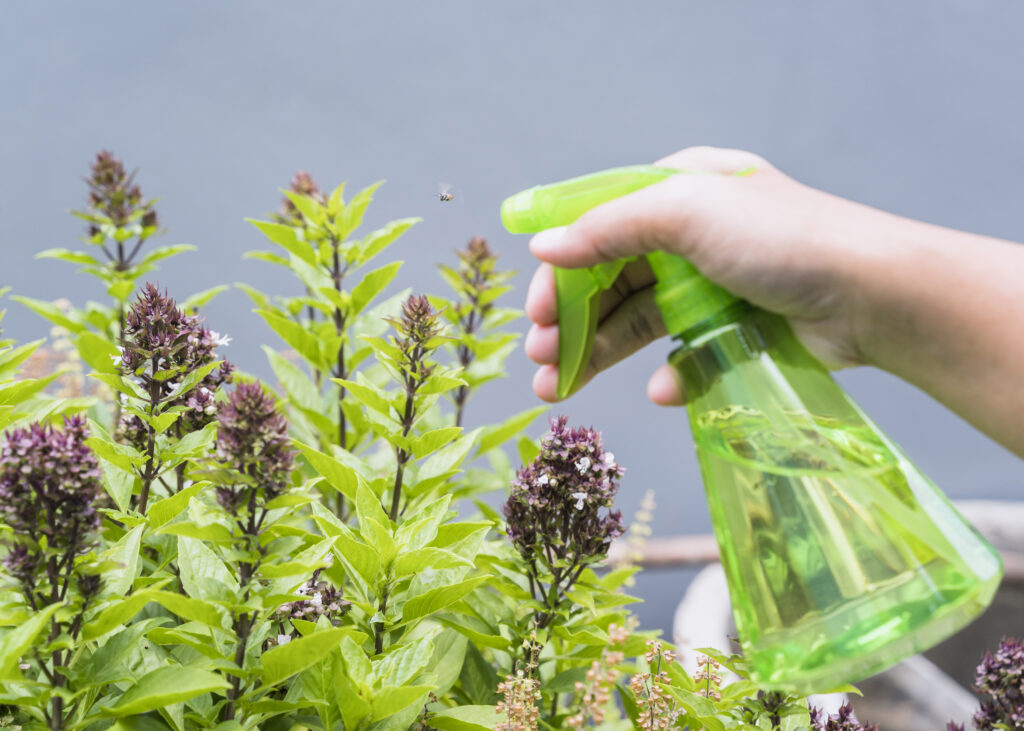
Growing lavender at home is a rewarding endeavor that allows you to experience the beauty and benefits of this versatile herb right in your own garden. Lavender’s delicate blooms, enchanting fragrance, and numerous uses make it a popular choice for gardeners and enthusiasts alike. Whether you’re a seasoned gardener or a novice, here’s a step-by-step guide to successfully cultivate and enjoy lavender at home.
Selecting the Right Location
Selecting the right location for growing lavender is crucial to ensure that this fragrant herb thrives and flourishes in your garden. Lavender is known for its love of sunshine and well-drained soil, so choosing the perfect spot is essential. Here’s a detailed guide to help you make the right choice:
1. Sunlight Requirements
Lavender is a sun-loving plant, and it needs plenty of direct sunlight to thrive. Here are some key points to consider:
- Full Sun: Lavender requires at least 6 to 8 hours of direct sunlight each day. Therefore, choose a location that receives ample sunlight throughout the growing season.
- South-Facing: If possible, opt for a south-facing or west-facing spot in your garden. These orientations receive the most sunlight during the day.
2. Soil Conditions
Lavender prefers well-drained soil, as it is susceptible to root rot in waterlogged conditions. Here’s what to look for:
- Well-Drained: Ensure that the soil in your chosen location drains well. Lavender does best in sandy or gravelly soil with good drainage.
- Soil pH: Lavender thrives in slightly alkaline soil with a pH between 6.5 and 7.5. You can adjust soil pH if needed by adding lime to raise it or sulfur to lower it.
- Elevated Beds: If your garden has heavy clay soil or poor drainage, consider planting lavender in raised beds or containers filled with well-draining potting mix.
3. Air Circulation
Good air circulation around lavender plants is important for preventing moisture-related issues and promoting healthy growth. Keep these points in mind:
- Spacing: Plant lavender with enough space between each plant to allow for proper air circulation. This helps reduce humidity around the plants and minimizes the risk of fungal diseases.
- Avoid Crowding: Avoid planting lavender near tall shrubs or trees that could block sunlight and air flow.
4. Protection from Wind
While lavender prefers sunny and well-ventilated locations, it’s also important to consider wind exposure:
- Moderate Wind: Lavender can tolerate moderate wind, but strong, constant winds can damage the plants. If your garden is exposed to strong winds, consider planting lavender near a windbreak or providing some protection, such as a fence or hedge.
5. Accessibility
Consider the practical aspects of tending to your lavender plants:
- Accessibility: Choose a location that is easily accessible for maintenance tasks like pruning, harvesting, and weeding.
6. Companion Plants
Lavender can benefit from the presence of certain companion plants and shrubs:
- Rosemary: Rosemary and lavender make great companions, as they have similar soil and sunlight requirements.
- Sage: Sage is another herb that pairs well with lavender and shares its love for sunlight and well-drained soil.
- Other Mediterranean Herbs: Lavender thrives when planted alongside other Mediterranean herbs like thyme and oregano.
7. Aesthetic Considerations
Finally, think about the aesthetics of your garden:
- Landscape Design: Lavender’s attractive appearance and fragrance make it a popular choice for ornamental gardens, so consider how it will fit into your overall landscape design.
By carefully selecting the right location for your lavender, you can create an ideal growing environment that allows this beautiful herb to flourish, filling your garden with its delightful aroma and vibrant blooms.
Planting Lavender
Follow these steps for successful planting:
- Prepare the Soil: If your soil isn’t well-drained, amend it by adding sand or gravel. Lavender prefers slightly alkaline soil, so consider adding lime if your soil is too acidic.
- Plant in Spring: Plant lavender in the spring, after the last frost. Dig a hole slightly larger than the plant’s root ball.
- Watering: Water thoroughly after planting, and then allow the soil to dry between watering. Overwatering can lead to root rot.
- Mulch: Apply a thin layer of mulch to help retain soil moisture and control weeds.
Care and Maintenance
Maintaining lavender is relatively low-maintenance, but it still requires attention:
- Pruning: Prune lavender in the spring to encourage bushier growth and remove dead or woody stems.
- Fertilization: Lavender doesn’t need much fertilizer. A light application of balanced fertilizer in early spring is usually sufficient.
- Weeding: Keep the area around your lavender plants free of weeds to reduce competition for nutrients and moisture.
- Harvesting: Harvest lavender blooms when they’re in full bloom but not fully open. Hang them to dry for various uses.
Growing lavender at home is a delightful and practical way to incorporate the beauty and benefits of this beloved herb into your life. With proper care and attention to its needs, lavender will reward you with its fragrant blooms, soothing aroma, and a myriad of uses that enhance your garden, well-being, and daily life. So, embark on this fragrant journey and savor the pleasures of cultivating lavender in your own home garden.
Harvesting and Drying Lavender
Harvesting and drying lavender is a delightful process that allows you to capture the essence of this fragrant herb at its peak. Whether you intend to use it for culinary, decorative, or aromatherapeutic purposes, proper harvesting and drying techniques are key to preserving lavender’s beauty and aroma. Here’s a step-by-step guide to help you get the most out of your lavender harvest:
Timing the Harvest
Lavender blooms at its most vibrant when harvested at the right time. Follow these guidelines:
Bloom Stage: Harvest lavender when about half of the flower buds on a stem have opened. This stage typically occurs in the early to mid-morning when the dew has dried but before the sun is too intense.
Bloom Season: Lavender typically blooms in late spring to early summer, depending on your location and the lavender variety you’re growing. Monitor your plants and aim to harvest during the peak of their blooming period.
Tools and Supplies
Gather the following tools and supplies to ensure a smooth and efficient lavender harvest:
Pruning Shears or Scissors: Use sharp, clean pruning shears or scissors to make clean cuts and minimize damage to the plants.
Twine or Rubber Bands: You’ll need twine or rubber bands to bundle the harvested lavender into manageable bunches.
Baskets or Buckets: Use containers to collect the harvested lavender as you work your way through the garden.
Harvesting Technique
Follow these steps for proper lavender harvesting:
- Select Healthy Stems: Choose stems that are free from disease or damage. Healthy stems are typically green and pliable.
- Cut the Stems: Using your pruning shears or scissors, cut the lavender stems just above the leaves. Leave a small portion of green growth on the stem to encourage future growth.
- Bundle Lavender: Gather 10-15 stems together, and secure them with twine or a rubber band to create a manageable bunch.
- Repeat: Continue harvesting stems in this manner, working your way through the lavender plants.
Drying Lavender
Drying lavender properly is essential to retain its aroma and color. Here’s how to dry lavender:
- Hang Bunches: Hang the lavender bundles upside down in a dry, cool, and well-ventilated area, away from direct sunlight. You can use a dark, airy room or a covered porch.
- Air Drying: Allow the lavender to air dry for about 2-4 weeks. Check the bundles periodically to ensure they are drying evenly.
- Check for Dryness: When the lavender is completely dry, the stems will snap easily, and the flowers will crumble when touched.
- Remove Buds: Gently strip the lavender buds from the stems by running your fingers along the stem. Store the dried buds in an airtight container away from moisture and sunlight.
Utilizing Dried Lavender
Once your lavender is dried and stored, you can enjoy its benefits in various ways:
- Aromatherapy: Use dried lavender buds in sachets, potpourri, or as an ingredient in homemade scented products like candles and bath salts.
- Culinary Uses: Dried lavender buds can be used to flavor dishes, teas, and desserts. Use sparingly, as lavender can be quite potent.
- Decorative Crafts: Incorporate dried lavender into wreaths, bouquets, or other decorative crafts to add a fragrant touch to your home.
- Health and Wellness: Lavender can be used in homemade skincare products, herbal remedies, or as an ingredient in essential oil blends for massage and relaxation.
Harvesting and drying lavender is not only a practical way to preserve its beauty and fragrance but also a gratifying garden-to-table experience. With proper techniques, you can savor the essence of lavender in a multitude of ways, adding a touch of elegance and aroma to your daily life.
Lavender Crafts and DIY Projects
Lavender, with its captivating aroma and delicate appearance, is a versatile herb that lends itself beautifully to various crafts and DIY projects. Whether you’re looking to add a touch of lavender’s charm to your home decor, create thoughtful gifts, or indulge in soothing self-care, there’s a lavender-inspired project for you. Here are some delightful lavender craft ideas to infuse your life with fragrance and beauty:
1. Lavender Sachets
Materials Needed:
- Dried lavender buds
- Fabric (cotton, muslin, or organza)
- Needle and thread or a sewing machine
Instructions:
- Cut your chosen fabric into squares or rectangles, ensuring they are large enough to hold the lavender buds comfortably.
- Fold the fabric in half with the inside facing out, and sew two of the three sides closed.
- Turn the fabric right side out.
- Fill the pouch with dried lavender buds.
- Sew the final side closed.
- Optional: Embellish the sachets with ribbon, lace, or personalized embroidery.
- Lavender sachets can be placed in drawers, closets, or under your pillow for a soothing and aromatic touch.
2. Lavender Wreaths
Materials Needed:
- Lavender stems (fresh or dried)
- Wire wreath frame or grapevine wreath base
- Floral wire or twine
- Ribbon for hanging
Instructions:
- Begin by selecting your lavender stems. Fresh stems should be partially dried before use to prevent mold.
- Create small bundles of lavender stems and secure them with floral wire or twine.
- Attach the lavender bundles to the wreath frame or base, overlapping them as you go around the circle.
- Continue until the entire wreath is covered with lavender.
- Add a decorative ribbon for hanging.
A lavender wreath is not only visually appealing but also emits a delightful fragrance, making it a beautiful addition to your home decor.
3. Lavender Candles
Materials Needed:
- Soy or beeswax candle wax
- Lavender essential oil
- Candle wicks
- Heat-resistant container or mold
Instructions:
- Melt the candle wax following the manufacturer’s instructions.
- Once melted, add a few drops of lavender essential oil to the wax and stir well.
- Secure a candle wick in the center of your chosen container or mold.
- Carefully pour the scented wax into the container or mold, ensuring the wick remains centered.
- Allow the wax to cool and solidify.
- Trim the wick to the desired length.
Lavender candles not only provide a warm and calming ambiance but also fill the air with a soothing aroma when lit.
4. Lavender Bath Bombs
Materials Needed:
- Baking soda
- Citric acid
- Cornstarch
- Epsom salt
- Lavender essential oil
- Dried lavender buds
- Coconut oil
- Bath bomb molds
Instructions:
- In a mixing bowl, combine 1 cup of baking soda, 1/2 cup of citric acid, 1/2 cup of cornstarch, and 1/2 cup of Epsom salt.
- Add a few drops of lavender essential oil and 2 tablespoons of melted coconut oil to the dry mixture. Mix well until it resembles wet sand.
- Add dried lavender buds to the mixture and stir to distribute them evenly.
- Fill the bath bomb molds with the mixture, pressing it down firmly.
- Allow the bath bombs to dry in the molds for at least 24 hours.
- Gently remove the bath bombs from the molds and store them in an airtight container.
Lavender bath bombs make for luxurious self-care treats, transforming your bath into a fragrant and relaxing oasis.
5. Lavender Potpourri
Materials Needed:
- Dried lavender buds
- Dried rose petals
- Dried citrus peel (orange or lemon)
- Small fabric bags or glass jars
Instructions:
- In a mixing bowl, combine dried lavender buds, dried rose petals, and dried citrus peel in your desired proportions.
- Fill small fabric bags or glass jars with the potpourri mixture.
- Seal the containers and place them in various locations throughout your home, such as closets, drawers, or on display in your living spaces.
- Lavender potpourri not only adds a decorative touch but also infuses your surroundings with a delightful fragrance.
6. Lavender-Infused Beauty Products
Materials Needed:
- Lavender-infused oil (carrier oil infused with dried lavender buds)
- Beeswax or shea butter (for salves and balms)
- Essential oils (optional, for added fragrance)
- Small glass jars or tins
Instructions:
- Combine lavender-infused oil with beeswax or shea butter in a double boiler to create soothing balms or salves.
- For creams or lotions, mix the lavender-infused oil with your choice of moisturizing ingredients and essential oils for fragrance.
- Pour the mixture into small glass jars or tins and allow it to cool and solidify.
- Lavender-infused beauty products can be used for moisturizing, soothing dry skin, and enjoying the calming effects of lavender on your skin.
These lavender crafts and DIY projects offer creative ways to incorporate the beauty and aroma of lavender into your daily life. Whether you’re crafting for yourself or creating thoughtful gifts for loved ones, the versatility of lavender makes it a delightful and fragrant addition to your creative endeavors.
Lavender’s Impact on Sleep
Struggling with insomnia? Lavender may hold the key to a peaceful night’s sleep. Learn how to harness its sleep-inducing powers.
Lavender as an Insect Repellent
Bid farewell to pesky bugs with lavender’s natural insect-repelling properties. We’ll show you how to use lavender to keep insects at bay.
Lavender in Art and Culture
Lavender’s beauty and symbolism have left their mark on art and culture. Discover its significance in literature, paintings, and traditions.
Sustainable Lavender Farming
As demand for lavender grows, sustainable farming practices become crucial. Explore the eco-friendly side of lavender cultivation.
Conclusion
In conclusion, lavender is a remarkable herb that has woven its fragrant threads through history, culture, and everyday life. Its versatility and benefits make it a true gift from nature.
Frequently Asked Questions
1. Can I grow lavender indoors?
Yes, you can grow certain lavender varieties indoors, provided they receive ample sunlight.
2. Is lavender safe for pets?
Lavender is generally safe for pets, but some animals may be sensitive to its scent. Monitor your pets’ reactions when using lavender products.
3. How do I make lavender oil at home?
You can make lavender oil at home by infusing lavender flowers in carrier oil. There are various DIY methods to explore.
4. What are the different lavender oil uses in aromatherapy?
Lavender oil can be used for stress relief, relaxation, promoting better sleep, and even as a natural remedy for headaches.
5. Where can I find sustainable lavender products?
Look for products from brands committed to sustainable and eco-friendly practices, or consider making your own lavender items at home.
Unlock the secrets of lavender and let its soothing scent and myriad of uses enhance your life. Access now: https://bit.ly/J_Umma to embark on your lavender journey.

